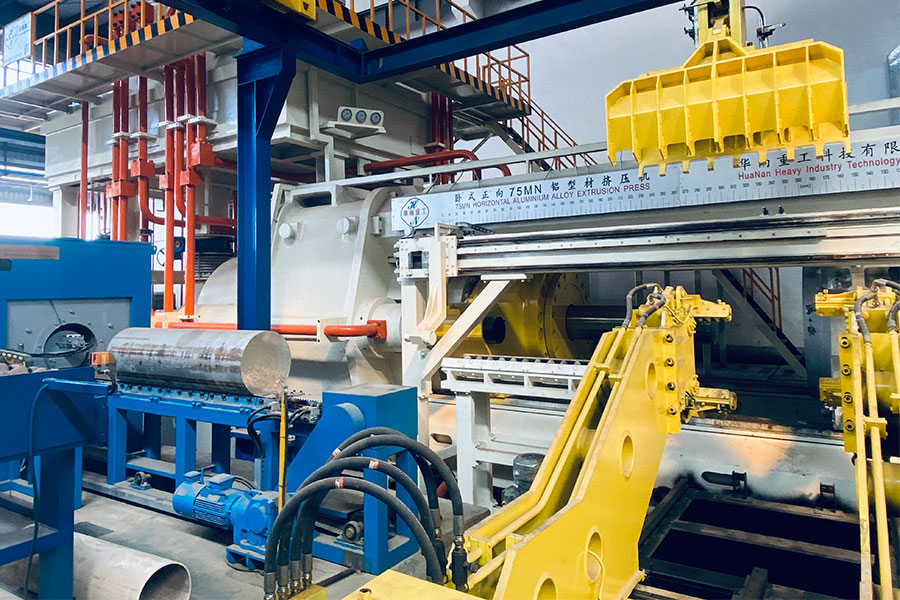
An aluminum extrusion machine is a commonly used industrial device for shaping aluminum alloys into various profiles through the extrusion process. Understanding its working principle and structure is crucial for optimizing extrusion and profile production.
Working Principle of the Aluminum Extrusion Machine
The aluminum extrusion machine typically consists of several key components
1 Heating System
The heating system heats the aluminum alloy to the appropriate extrusion temperature before it is fed into the extrusion chamber. This system commonly uses electric or gas heating to achieve the desired temperature for efficient processing.
2 Extrusion Chamber
The extrusion chamber contains a mold cavity, or die, with the desired cross-sectional shape of the aluminum profile. Inside the chamber, aluminum alloy is fed and pressed through the die, forming the required profile.
3 Feeding and Pressing System
Aluminum alloy is introduced into the extrusion chamber through a feeding system. A piston or screw mechanism applies pressure to force the aluminum through the die, shaping it into the desired profile.
4 Cooling System
A cooling system rapidly cools the extruded aluminum profile to maintain its shape and ensure its performance. This step prepares the profile for subsequent processing and treatment.
Key Considerations in the Extrusion Process
1 Temperature Control
Maintaining the correct heating temperature is essential for ensuring the aluminum alloy has the right plasticity, making it easier to extrude.
2 Chamber and Die Design
The design of the extrusion chamber and die plays a critical role in achieving the desired profile shape. Proper design ensures uniform filling of the aluminum alloy in the die and maintains the stability of the profile's geometry during the process.
3 Cooling Efficiency
The cooling system significantly affects the quality and properties of the extruded profile. Proper cooling speed prevents deformation, cracks, or other defects, ensuring the final product's durability and performance.
In summary, understanding the aluminum extruder structure and working principle allows manufacturers to optimize the extrusion process and produce high-quality aluminum profiles efficiently.
